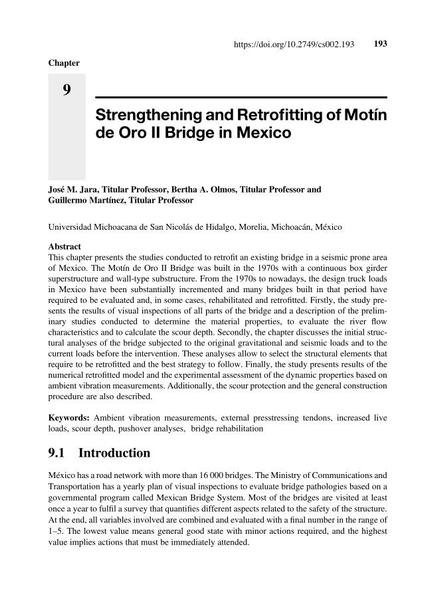|
Abstrakt:
|
This chapter presents the studies conducted to retrofit an existing bridge in a seismic prone area of Mexico. The Motín de Oro II Bridge was built in the 1970s with a continuous box girder superstructure and wall-type substructure. From the 1970s to nowadays, the design truck loads in Mexico have been substantially incremented and many bridges built in that period have required to be evaluated and, in some cases, rehabilitated and retrofitted. Firstly, the study presents the results of visual inspections of all parts of the bridge and a description of the preliminary studies conducted to determine the material properties, to evaluate the river flow characteristics and to calculate the scour depth. Secondly, the chapter discusses the initial structural analyses of the bridge subjected to the original gravitational and seismic loads and to the current loads before the intervention. These analyses allow to select the structural elements that require to be retrofitted and the best strategy to follow. Finally, the study presents results of the numerical retrofitted model and the experimental assessment of the dynamic properties based on ambient vibration measurements. Additionally, the scour protection and the general construction procedure are also described.
|

